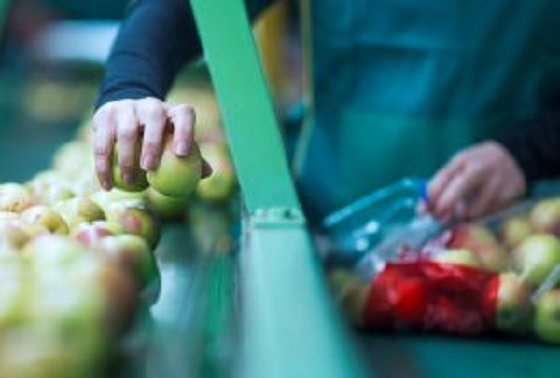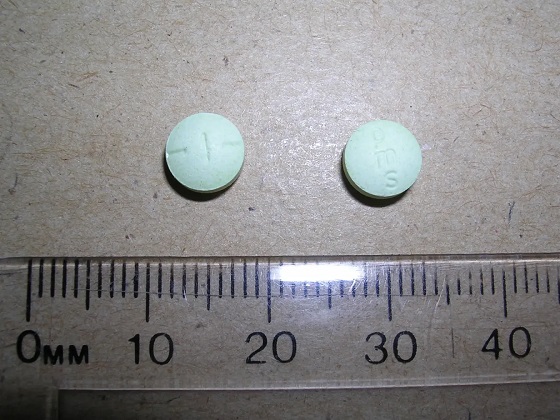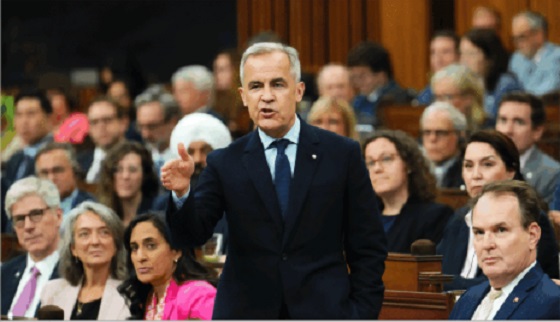Energy
From Sippy Cups to Solar Panels: Why a Blanket Ban on Plastics Misses the Mark

From EnergyNow.ca
By Canada Powered by Women
Repeated attempts by the federal government to implement a sweeping ban on plastics don’t consider the crucial role plastics play in the lives of Canadians and energy transformation.
Plastic is in many products we need every day, including medical equipment, headphones, car seats, menstrual products and computers. For mothers enjoying summer with their kids — don’t forget sippy cups, running shoes and diapers (to name a few).
In Canada, as many as 70,000 plastic products are made every day. They are essential, whether we’re working, having fun or simply trying to go about our daily lives.
The chemistry and plastics sector is also the third largest manufacturing sector in Canada, employing more than 190,000 people and shipping more than $108 billion in products in 2022.
So, this fall when the Appeals Court revisits the federal government’s move that labelled many plastics as “toxic”, engaged women from across the country are going to be watching.
They’re watching because the use of plastic touches many areas of their personal lives and interests.
Plastic is a critical component in the energy transformation (which we know engaged women care a lot about) and it’s intricately connected to the development and deployment of renewable energy technologies. These are important considerations for our country’s broader energy policy and sustainability goals, and engaged women are paying attention because they’re not convinced Canada has energy policies that positively affect prosperity.
Engaged women in Canada have also told us they want a balanced approach on the environment, energy and economic prosperity. As a result, their understanding of policies is deepening, and they are focusing on long-term prosperity and affordability while striving for a well-rounded strategy when it comes to policymaking.
So how did we get here with the plastics issue, and what happens next?
The single-use plastic ban that started it all
In 2019, the federal government announced it would seek to ban single-use plastic items such as straws, cutlery, take out containers, stir sticks and plastic bags to reduce plastic waste.
The ban came into effect in 2022 after the federal government added all plastic manufactured items (PMIs) to a toxic substance list (a key step in allowing it to ban these items).
Waste management is a provincial responsibility, but the federal government is able to regulate substances for environmental protection if they are listed as toxic under the Canadian Environmental Protection Act.
In 2023, a federal court reviewed the legislation after complaints surfaced saying Ottawa failed to demonstrate enough scientific evidence to justify the sweeping regulations.
The court agreed, ruling that the federal government exceeded its authority by listing all PMIs as toxic, calling the move “unreasonable and unconstitutional”.
The federal government appealed the decision, and on June 25-26 this year, the Federal Appeals Court heard arguments for and against listing all PMIs as toxic.
A decision on the appeal is expected this fall, and the outcome of the ruling has many concerned about what future bans and other restrictive regulations and policies will mean for everyday Canadians.
How plastics restrictions could hurt Canadians
Christa Seaman, vice-president of the plastics division with the Chemistry Industry Association of Canada, says further restrictions on using plastic will have serious ramifications.
“If we start to take away plastic packaging that’s keeping our food safe, for example, you’ll actually see increased cost to consumers because food is going to spoil before it gets to market or shipping is going to be more expensive because the packaging for the products are going to weigh more,” says Seaman.
Seaman also highlights restrictions on plastics could limit the availability of certain products that rely on plastic packaging or components, and Canadians may have reduced access to the variety of inexpensive goods we use today.
Plastics play a big role in low-carbon technology development
There are sustainable ways to keep plastics out of the environment and in the economy, Seaman says, particularly because of the key role they’re already playing in the proliferation of green technologies.
For example, batteries in electric vehicles (EVs) are heavier than in vehicles with internal combustion engines so plastics are being used to manufacture EVs.
“Plastics, being lightweight and durable, are key to keeping the weight of the vehicle down,” she says. “We have less wear and tear on our roads and we’re actually able to increase the driving range per charge, without compromising safety at all.”
Plastics also make renewable energy sources like wind and solar possible, Seaman says. They are a key component in solar panels, and blades of wind turbines are made with fibreglass and other plastic composite materials.
Rather than an outright ban on plastics, we’d be better off exploring how a circular economy — one that includes the appropriate use, reuse and recycling of plastics — can keep plastic waste out of the environment and create a more sustainable future.
Some provinces and territories have also initiated an important shift in responsibility by making producers of plastic products responsible for funding their collection and recycling, Seaman says.
“Provinces are setting the guidelines on achieving certain benchmarks and targets for recyclability, which will go back to how the products are designed,” she says. “The cheaper and easier it is to recycle, the less they’re going to have to spend on the recycling system in the end.”
Seaman says the industry goal is to focus on reduction first by making packaging smaller or thinner. Then the focus turns to reusing plastics, and once those options are exhausted the goal is to recycle.
What we need from policymakers
Listing all plastics as toxic, and then implementing bans around their use, is heavy-handed and misguided.
Seaman says a collaborative approach between policymakers and producers is what’s needed now, and policy should reflect what’s best for the public, the environment and the economy.
“We need all solutions to be on the table: your compostable, your biodegradable, your advanced recycling, your mechanical recycling.”
Seaman says the focus should be placed on outcome-based regulations and science.
“Let’s talk about the outcomes we’re all trying to achieve, because nobody wants to see plastics in the environment, in the waterways or in landfill. Let’s look at what targets need to be and find a way to get there together.”
Energy
Activists using the courts in attempt to hijack energy policy

2016 image provided by Misti Leon, left, sits with her mom, Juliana Leon. Misti Leon is suing several oil and gas companies in one of the first wrongful-death claims in the U.S. seeking to hold the fossil fuel industry accountable for its role in the changing climate.

From the Daily Caller News Foundation
By Jason Isaac
They twist yesterday’s weather into tomorrow’s crisis, peddle apocalyptic forecasts that fizzle, and swap “global warming” for “climate change” whenever the narrative demands. They sound the alarm on a so-called climate emergency — again and again.
Now, the Left has plunged to a new low: weaponizing the courts with a lawsuit in Washington State that marks a brazen, desperate escalation. This isn’t just legal maneuvering—it’s the exploitation of personal tragedy in service of an unpopular anti-energy climate crusade.
Consider the case at the center of a new legal circus: Juliana Leon, 65, tragically died of hyperthermia during a 100-mile drive in a car with broken air conditioning, as a brutal heat wave pushed temperatures to 108 degrees Fahrenheit.
Dear Readers:
As a nonprofit, we are dependent on the generosity of our readers.
Please consider making a small donation of any amount here.
Thank you!
The lawsuit leaps from this heartbreaking event to a sweeping claim: that a single hot day is the direct result of global warming.
The lawsuit preposterously links a very specific hot weather event to theorized global warming. Buckle up—their logic is about to take a wild ride.
Some activist scientists have further speculated that what may be a gradual long-term trend of slight warming thought to be both cyclical and natural, might be possibly exacerbated by the release of greenhouse gases. Some of these releases are the result of volcanic activity while some comes from human activities, including the burning of oil, natural gas and coal.
Grabbing onto that last, unproven thread, the plaintiffs have zeroed in on a handful of energy giants—BP, Chevron, Conoco, Exxon, Phillips 66, Shell, and the Olympic Pipe Company—accusing them of causing Leon’s death. Apparently, these few companies are to blame for the entire planet’s climate, while other oil giants, coal companies, and the billions of consumers who actually use these fuels get a free pass.
Meanwhile, “climate journalists” in the legacy media have ignored key details that will surely surface in court. Leon made her journey in a car with no air conditioning, despite forecasts warning of dangerous heat. She was returning from a doctor’s visit, having just been cleared to eat solid food after recent bariatric surgery.
But let’s be clear: this lawsuit isn’t about truth, justice, or even common sense. It’s lawfare, plain and simple.
Environmental extremists are using the courts to hijack national energy policy, aiming to force through a radical agenda they could never pass in Congress. A courtroom win would mean higher energy prices for everyone, the potential bankruptcy of energy companies, or their takeover by the so-called green industrial complex. For the trial lawyers, these cases are gold mines, with contingency fees that could reach hundreds of millions.
This particular lawsuit was reportedly pitched to Leon’s daughter by the left-leaning Center for Climate Integrity, a group bankrolled by billionaire British national Christopher Hohn through his Children’s Investment Fund Foundation and by the Rockefeller Foundation. It’s yet another meritless claim in the endless list of climate lawsuits that are increasingly being tossed out of courts across the country.
Earlier this year, a Pennsylvania judge threw out a climate nuisance suit against oil producers brought by Bucks County, citing lack of jurisdiction. In New York, Supreme Court Justice Anar Patel dismissed a massive climate lawsuit by New York City, pointing out the city couldn’t claim both public awareness and deception by oil companies in the same breath.
But the Washington State case goes even further, threatening to set a dangerous precedent: if it moves forward, energy companies could face limitless liability for any weather-related injury. Worse, it would give unwarranted credibility to the idea — floated by a leftwing activist before the U.S. Senate — that energy executives could be prosecuted for homicide, a notion that Republican Texas Sen. Ted Cruz rightly called “moonbeam, wacky theory.”
The courts must keep rejecting these absurd lawfare stunts. More importantly, America’s energy policy should be set by Congress—elected and accountable—not by a single judge in a municipal courtroom.
Jason Isaac is the founder and CEO of the American Energy Institute. He previously served four terms in the Texas House of Representatives.
Alberta
Temporary Alberta grid limit unlikely to dampen data centre investment, analyst says
From the Canadian Energy Centre
By Cody Ciona
‘Alberta has never seen this level and volume of load connection requests’
Billions of investment in new data centres is still expected in Alberta despite the province’s electric system operator placing a temporary limit on new large-load grid connections, said Carson Kearl, lead data centre analyst for Enverus Intelligence Research.
Kearl cited NVIDIA CEO Jensen Huang’s estimate from earlier this year that building a one-gigawatt data centre costs between US$60 billion and US$80 billion.
That implies the Alberta Electric System Operator (AESO)’s 1.2 gigawatt temporary limit would still allow for up to C$130 billion of investment.
“It’s got the potential to be extremely impactful to the Alberta power sector and economy,” Kearl said.
Importantly, data centre operators can potentially get around the temporary limit by ‘bringing their own power’ rather than drawing electricity from the existing grid.
In Alberta’s deregulated electricity market – the only one in Canada – large energy consumers like data centres can build the power supply they need by entering project agreements directly with electricity producers.
According to the AESO, there are 30 proposed data centre projects across the province.
The total requested power load for these projects is more than 16 gigawatts, roughly four gigawatts more than Alberta’s demand record in January 2024 during a severe cold snap.
For comparison, Edmonton’s load is around 1.4 gigawatts, the AESO said.
“Alberta has never seen this level and volume of load connection requests,” CEO Aaron Engen said in a statement.
“Because connecting all large loads seeking access would impair grid reliability, we established a limit that preserves system integrity while enabling timely data centre development in Alberta.”
As data centre projects come to the province, so do jobs and other economic benefits.
“You have all of the construction staff associated; electricians, engineers, plumbers, and HVAC people for all the cooling tech that are continuously working on a multi-year time horizon. In the construction phase there’s a lot of spend, and that is just generally good for the ecosystem,” said Kearl.
Investment in local power infrastructure also has long-term job implications for maintenance and upgrades, he said.
“Alberta is a really exciting place when it comes to building data centers,” said Beacon AI CEO Josh Schertzer on a recent ARC Energy Ideas podcast.
“It has really great access to natural gas, it does have some excess grid capacity that can be used in the short term, it’s got a great workforce, and it’s very business-friendly.”
The unaltered reproduction of this content is free of charge with attribution to the Canadian Energy Centre.
-

 Opinion1 day ago
Opinion1 day agoPreston Manning: Three Wise Men from the East, Again
-

 Addictions1 day ago
Addictions1 day agoWhy B.C.’s new witnessed dosing guidelines are built to fail
-

 Business1 day ago
Business1 day agoMark Carney’s Fiscal Fantasy Will Bankrupt Canada
-

 Uncategorized2 days ago
Uncategorized2 days agoCNN’s Shock Climate Polling Data Reinforces Trump’s Energy Agenda
-

 COVID-1924 hours ago
COVID-1924 hours agoTrump DOJ dismisses charges against doctor who issued fake COVID passports
-

 Alberta24 hours ago
Alberta24 hours agoTemporary Alberta grid limit unlikely to dampen data centre investment, analyst says
-

 Entertainment2 days ago
Entertainment2 days agoStudy finds 99% of late-night TV guests in 2025 have been liberal
-

 Energy20 hours ago
Energy20 hours agoActivists using the courts in attempt to hijack energy policy






